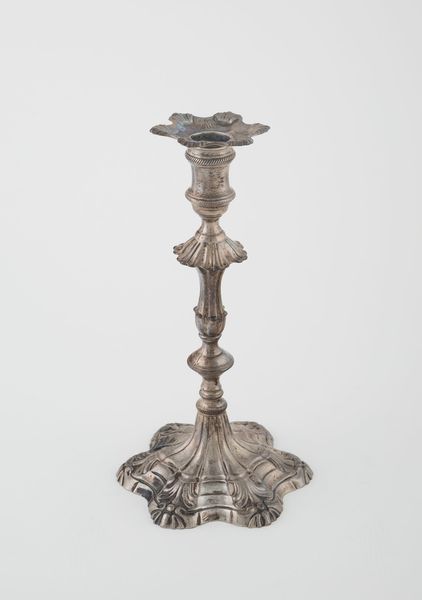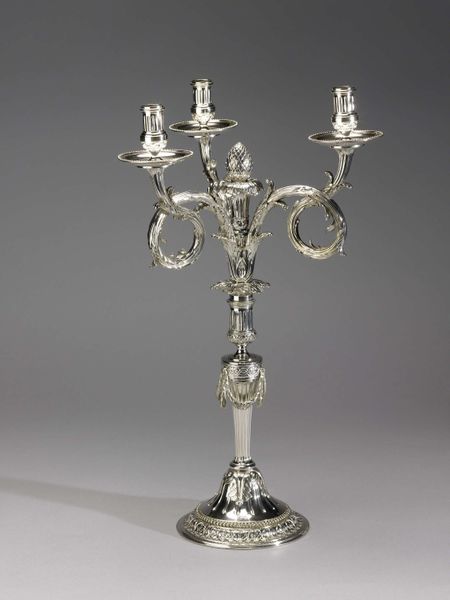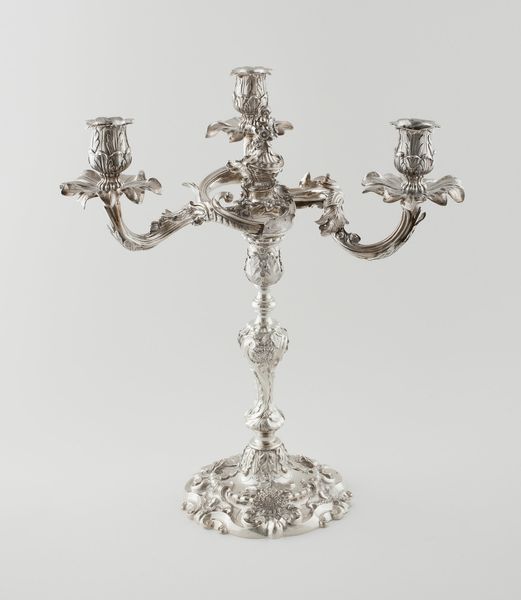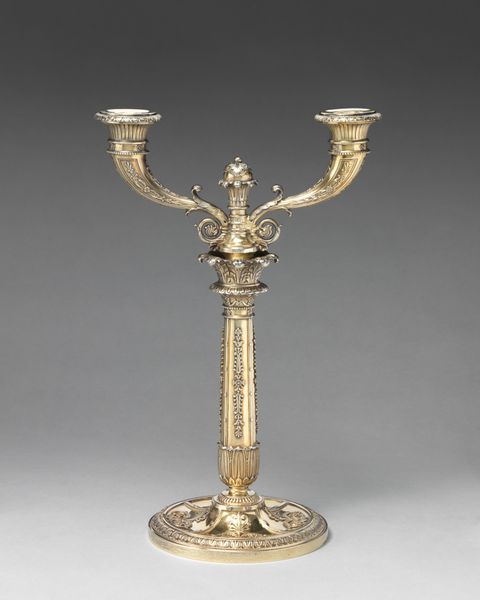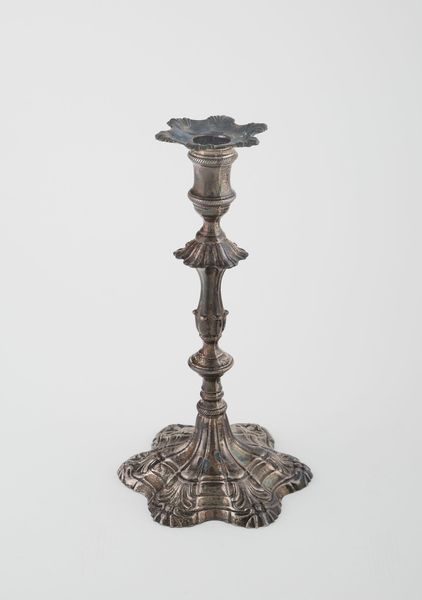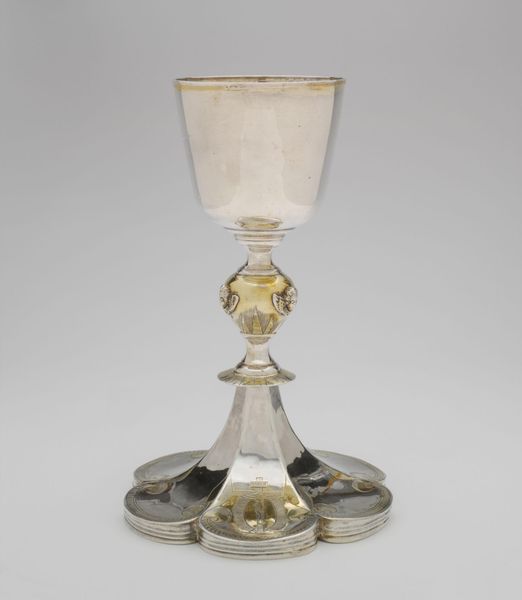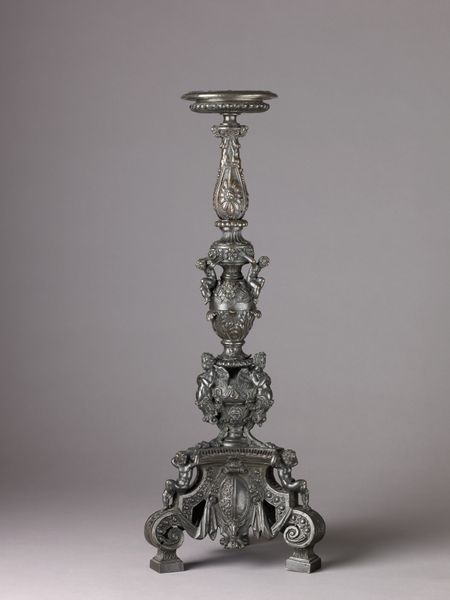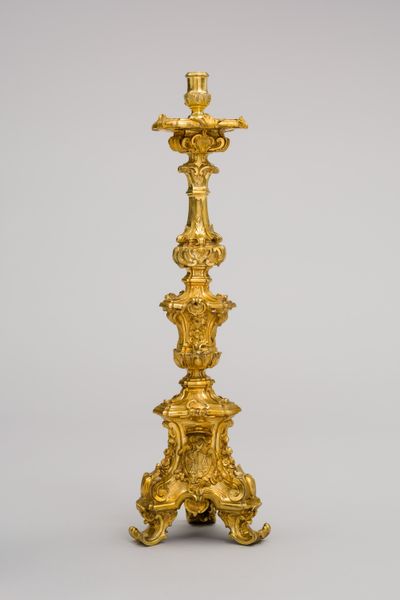
silver, metal, metalwork-silver, sculpture
#
silver
#
baroque
#
metal
#
sculpture
#
metalwork-silver
#
sculpture
#
decorative-art
#
statue
Dimensions: Overall: 13 1/4 × 11 3/8 in. (33.7 × 28.9 cm)
Copyright: Public Domain
Curator: My first impression is 'opulence'. All that gleaming metal – I can practically smell the beeswax candles and see the shadows dancing in a grand hall! Editor: You’ve picked up on exactly what it aims for. What you’re looking at is one of a pair of silver candelabra, created between 1725 and 1750. The artisan behind it was Daniel Friedrich Metius. They’re on display right now at the Metropolitan Museum of Art. Curator: Metius... I like the sound of that! It really is a statement piece, isn’t it? That intricate Baroque design, every surface chased and engraved... imagine the light reflecting off all that silver! There’s something almost theatrical about it. Editor: Baroque is exactly right! These weren't just functional objects; they were symbols of status and power. Silver itself was, of course, highly valuable, and commissioning elaborate pieces like this sent a clear message about the owner's wealth and taste. Think of the political implications inherent in something so flamboyant! Curator: Oh, absolutely! This is pure theatre, high drama. One can imagine that even the act of lighting the candles became some kind of ritual. It makes me think, you know, how much of what we consider art now was really functional, at least initially? It must have been wonderful and a tiny bit sinister. Editor: Precisely. And silver, beyond its monetary value, carried other connotations. It was associated with purity and, of course, light itself. These associations were carefully cultivated by those in power. Owning something like this declared to the world that you weren’t just rich, but virtuous, enlightened even! Or at least that was the marketing message. Curator: It’s quite remarkable how objects like these become time capsules, silently echoing past social values and fantasies. Looking at it now, removed from its original context, is a bit like eavesdropping on a very lavish party. It reminds me a bit of the sets and costuming in Barry Lyndon, all elaborate constructions for the eye. Editor: Very well put. Objects carry histories, sometimes heavy ones, and decode how institutions shaped society. It’s about thinking beyond mere aesthetics, I think, toward the stories these pieces silently tell us about patronage, display, and cultural aspirations. Curator: Indeed! A glittering riddle wrapped in a silver shell.
Comments
No comments
Be the first to comment and join the conversation on the ultimate creative platform.


